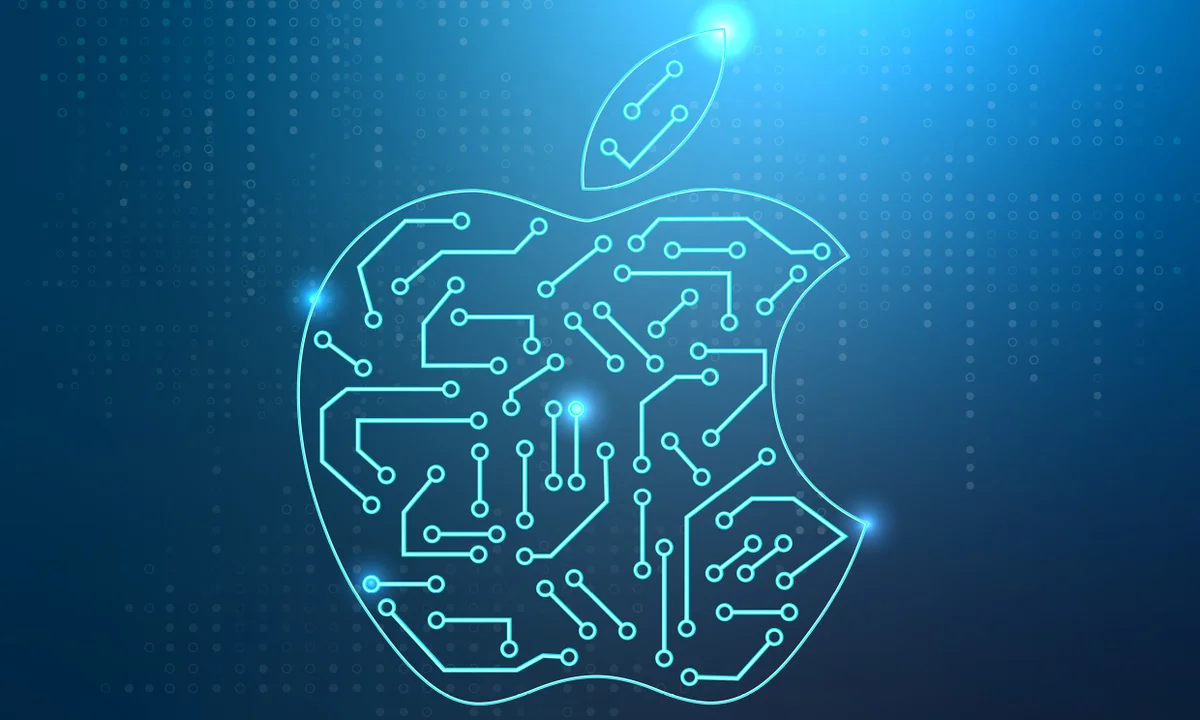June 11, 2025 – In a groundbreaking announcement at WWDC 2025, Apple officially introduced “Apple Intelligence,” its new generative AI system deeply integrated into iOS 19, iPadOS 19, and macOS Sequoia. With this move, Apple joins the AI race dominated by Microsoft, Google, and OpenAI, but with a distinctive approach focused on personal utility, tight ecosystem integration, and user privacy.
A Historic Moment in Apple’s AI Journey
Apple’s entrance into the generative Artificial Intelligence landscape has been years in the making. For over a decade, Apple focused on machine learning enhancements for its hardware and software products—Siri, Photos, Face ID, and Apple Watch health features have all used on-device AI.
Unlike Google, Meta, and Microsoft, which began releasing large-scale AI tools between 2022 and 2023, Apple’s approach was intentionally conservative. Critics often argued the company was falling behind in the AI race. However, Apple has long maintained that it would only embrace such transformative technologies when it could ensure user safety, privacy, and meaningful utility.
With Apple Intelligence, the company has delivered on that promise, entering the generative AI era with a focus on personalization and privacy-first design.
What Is Apple Intelligence?
Announced by Apple CEO Tim Cook and SVP Craig Federighi, Apple Intelligence is a system-wide intelligence layer that transforms the way users interact with their devices. Unlike standalone chatbots or web interfaces, Apple Intelligence is embedded into apps, features, and system functions.
Key Features of Apple Intelligence:
- Smarter Siri with Natural Language Understanding
Siri has been significantly upgraded and can now understand natural conversation better, hold context across tasks, and perform more complex actions. For advanced tasks, it can hand off questions to ChatGPT (via integration with OpenAI), with user permission. - Writing Tools for Emails, Notes, and Messages
A powerful writing assistant provides rephrasing, summarizing, tone adjustment, and grammar suggestions across apps like Mail, Notes, Safari, and even third-party applications. - Priority Notifications and Smart Summaries
Apple Intelligence filters and summarizes notifications, allowing users to focus on what’s important. It can also generate smart recaps for missed messages, meetings, and more. - Image Playground
Apple has introduced a creative tool for generating AI-powered images. Users can choose from styles like animation, illustration, or sketch to visualize ideas and messages. - Genmoji and Personalized AI Emojis
Users can create AI-generated emojis that reflect a specific emotion, concept, or combination of ideas, extending personalization in iMessage and social apps. - Context-Aware Actions
Based on what a user is doing, Apple Intelligence suggests relevant actions—for example, drafting a meeting summary from a document, or suggesting a call based on an unread email.
Integration and Privacy Architecture

Apple’s major differentiator in the AI space is privacy. At the core of Apple Intelligence lies a hybrid processing model:
- On-device Processing: Most tasks are handled locally using Apple Silicon (A17 and M-series chips), meaning private user data remains secure and does not leave the device.
- Private Cloud Compute: For tasks that require more computational power, Apple routes data through temporary, non-stored cloud servers. Apple insists these are fully encrypted, inaccessible even to Apple itself.
This dual-layered architecture is Apple’s answer to critics of cloud-based AI. Where other companies collect and store data to train models, Apple processes requests anonymously and on demand.
As Apple SVP Craig Federighi put it, “We’re not building a model of you, we’re building a model that works for you.”
Device Compatibility and Rollout
Apple Intelligence will be available this fall in developer betas and public releases later in the year. It will be limited to:
- iPhone 15 Pro and later
- iPads and Macs with M1 chips or later
This hardware restriction is due to the system’s reliance on high-performance neural engines and memory capacity.
Collaboration with OpenAI
In a move that surprised many, Apple confirmed its collaboration with OpenAI to power some of Siri’s more advanced conversational capabilities. If a user opts in, Siri can send complex queries to ChatGPT-4o, with explicit user consent and transparency.
Apple emphasized that the data sent to ChatGPT will not be stored and is never used for training. For users who prefer, this feature can be disabled, keeping Siri fully on-device.
While Apple hasn’t said whether other AI partners will be included, rumors suggest Google’s Gemini and Anthropic’s Claude may be considered in future integrations.
Industry Reactions and Strategic Implications
The launch of Apple Intelligence has received praise and criticism in equal measure. Supporters highlight the seamless integration, responsible design, and user-focused approach. Detractors argue that Apple is playing catch-up and that the product is still less capable than standalone chatbots like GPT-4 or Gemini 1.5.
However, many analysts agree that Apple’s strength lies in user trust and its ability to deploy features to over a billion active devices globally.
According to Ben Bajarin of Creative Strategies, “Apple may not be first, but they often redefine the category—and that’s what we’re seeing here with Apple Intelligence.”
Impact on the Competitive Landscape
Apple’s move into generative AI is likely to have ripple effects across the tech industry. Here’s how:
1. Pressure on Rivals to Match Privacy Standards
Google and Microsoft have focused more on capability than privacy. Apple’s insistence on device-level processing may raise consumer expectations, pushing competitors to reevaluate data practices.
2. Acceleration in AI-Powered Operating Systems
With Apple setting a new baseline, future updates to Android, Windows, and Linux may increasingly incorporate native AI enhancements rather than relying on web APIs.
3. A New Frontier for AI Tools and App Developers

Developers are gaining access to Apple Intelligence APIs, enabling them to embed summarization, text generation, image rendering, and context recognition into their apps. This opens major innovation opportunities across AI tools, design platforms, communication, and productivity suites.
4. Device Upgrade Incentives
By limiting support to newer chips, Apple is also giving consumers a reason to upgrade. Analysts predict a potential iPhone supercycle driven by AI-driven features.
Future Outlook: Where Is Apple Headed?
Apple has outlined a cautious but ambitious AI roadmap. Future updates are expected to include:
- Multilingual understanding and translation in real-time
- Deeper context memory spanning across Apple services
- Richer integration with third-party productivity tools
- AI-driven health and fitness insights via Apple Watch
The company is also investing heavily in its AI research labs, hiring talent in large numbers for its Zurich and Cupertino AI teams. While the company hasn’t announced a foundation model of its own, insiders hint at proprietary training efforts in progress.
Moreover, Apple is rumored to be developing a system similar to AutoGPT—allowing multi-step task completion using chained prompts and contextual memory.
Challenges Ahead
Despite its impressive launch, Apple faces several challenges:
- Hardware Dependency: Older device users are left out, creating friction in global adoption.
- Developer Learning Curve: Integrating Apple Intelligence into apps will require new skills and development patterns.
- Regulatory Oversight: As global policymakers turn their eyes toward AI, Apple will need to maintain transparency, especially with partnerships like OpenAI.
Additionally, the line between utility and intrusion will need to be carefully managed. Users may be wary of even anonymized data moving to cloud compute environments, no matter how secure Apple claims they are.
A Defining Moment for Consumer AI
Apple’s unveiling of Apple Intelligence is more than just a feature update—it’s a signal that consumer-focused generative AI is becoming mainstream. While others have prioritized innovation speed, Apple’s focus on ecosystem cohesion, privacy, and practical design may help it dominate this new AI frontier.
As generative AI shifts from novelty to necessity, Apple’s commitment to responsible deployment could become its most powerful competitive weapon.
Conclusion: Apple’s AI Gamble May Redefine the Market
In true Apple fashion, the company has waited, observed, and delivered a solution that is tightly integrated, intuitive, and personal. Apple Intelligence isn’t about flashy demos or endless chatbot prompts—it’s about transforming everyday digital tasks into seamless, intelligent experiences.
As Apple rolls out its features across hundreds of millions of devices, the implications will be profound—not just for its own platform but for how consumers everywhere perceive and interact with AI.
This launch may not just be a step in the evolution of tech—it could be a major leap forward in how humans collaborate with intelligent systems.
For more updates on Apple Intelligence, generative AI breakthroughs, and emerging technologies, follow our coverage at Tech Thrilled. Don’t forget to explore our latest press releases and share your thoughts on how Apple’s AI push may reshape the future.
